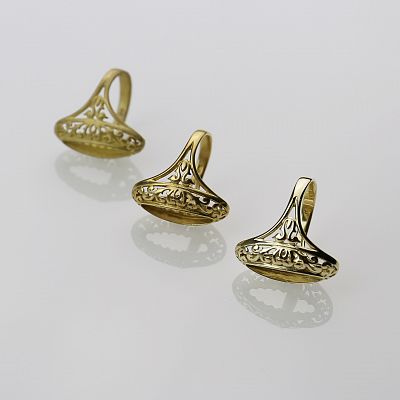We do have experience
Constant improving of the technological processes together with using the highest quality abrasive media combined with the compounds has let us create reliable methods of obtaining the mirror shine on the workpieces.
Where a chip can’t reach- polishing places that are difficult of access
It is often impossible for a chip to reach different types of grooves, dents or nooks. For finishing of this type of material the best solution is using magnetic polishers. Their task is an initial cleaning and polishing the places that are difficult of access.
Preparing background is the key to success
Grinding process is held in disc finishers, wet versions EC or TE series. A wide range of the sizes of the machines allows choosing an optimal capacity for a given production while the separation systems, in which the machines are equipped, make separation of the workpieces and the media very efficient. Processing time is several times shorter than for the same activities with the use of round vibratory machines and more than ten times shorter then with the use of rotary tumblers. The process is supported with compounds that improve sliding properties as well as quicken the process of microfinishing. Fast emptying of the working chamber allows often cycle changes and makes the machines of this type highly effective.
The grinding process usually held in two stages with the usage of plastic chips of different abrasive properties.
A) Raw detail with much roughness B) smoothened detail after the operation of 2 stage grinding
Grinding of workpieces especially likely to damage
The interactions taking place in disc finishing machines between either two workpieces or between the abrasive media and theworkpieces are far more aggressive than in round vibratory machines. In case of quite fragile workpieces (e.g. necklace, long elements less than 0,3 mm thick or of significant dimensions) grinding is performed in round vibratory machines with the use of plastic chips of special kind , which intensifies the process of finishing by gradual releasing of abrasive powder.
Mirror shine without any scratch? Wet polishing
CEROFIN is AVALON’s flagship technology that has been valued in the jewellery sector for years. The processed surfaces gain mirror shine without visible technological scratches, characteristic of conventional manual processing or mechanical dry polishing using walnut shell. Precisely chosen parameters together with using AVALON machines guarantee repeatable cycles and the final effect is always on the highest level.
How does it work?
Workpieces after grinding are followed by smoothing in a round vibratory machine. This stage is an integral part of the whole process. For the smoothing process porcelain chips CMG and GP20 powder are used. Special formula of the powder has 2 functions- in the initial stage it smoothens the surface and in the final stage it acts as polishing medium giving the workpieces initial polish. The second stage because of 16 hour working time is adjusted to working at night. The process takes place with closed lid what guarantees stable work. Such prepared surface is next brought under a process of final polishing in porcelain chips dedicated to this process. The workpieces have mirror shine not only on the outside but also on the inside.
Short working time and excellent results? Dry polishing
Fast and equally effective processing can be gained in a 2 stage process of polishing with the use of walnut shell granulate. The whole process takes place in a disc finishing machine and together with grinding takes about 6 hours. The result is perfect surfaces with mirror shine. What is more this technology is highly dependable for processing long and flat workpieces which have tendency to packeting that is sticking together while being processed in round vibratory machines. Due to the fact that the interactions in disc finishing machines are much more aggressive than in round vibratory machines, when using jewellery of big weight there is a risk of impingement of jewellery pieces into each other.






